QuestionQUESTION: I have had freshwater aquariums for a few years and I am now wanting to try saltwater out. I was wondering what would be the minimum size tank I could start out with and what all I would need to get started with a saltwater aquarium and the steps to setting it up . I am wanting a fish only tank with a few damselfish and possibly a couple clownfish.
Any advice would be great.
ANSWER: Hi Rebecca. The size tank you will need is going to depend on the amount of money you want to spend and the amount of space you have for your tank. Typically you should get the biggest tank you can afford because the bigger the tank the more stable it is. However with that said you can be pretty successful with just about any size tank and for the few fish you want a thirty gallon tank should be sufficient. As far as getting started with a saltwater tank you will simply need all the same equipment used for a tropical freshwater tank. The only other important piece of equipment would be a good protein skimmer. Your filter should be one that you are familiar with and one that you would feel comfortable in maintaining. A heater, thermometer, maybe a power head for a little extra water movement depending on how much movement there is with the skimmer and the filter. You should have a good flow of water but it should not be turbulent that it pushes the fish around. You will need a protein skimmer rated for your size tank and then some as this will help keep the waste products down. Test kits for ammonia, nitrite, nitrate, pH, alkalinity, phosphate, and a hydrometer or refractometer for testing the salt level in the tank are also all necessary pieces of equipment. I highly recommend the use of a quarantine tank for every newly purchased fish. A quarantine tank can be very simple in design; a small ten gallon tank with a heater and a filter with dim lighting. Nothing fancy! When setting up your tank place your coral or sand substrate(must be made for a saltwater tank) in the bottom of the tank.(If you are also going to be using live rock this can be placed on the bottom of the tank and filled in around with your sand substrate) If you decided to use live sand(I recommend it) do not rinse it first and be ready to go with some premixed saltwater. Premix your saltwater in a bucket using only reverse osmosis or distilled water(this is true for every water change and for top offs down the road) at a rate of about 1/2 cup synthetic seasalt mix to 1 gallon of water. Give the water 15-30 minutes to fully dissolve and test your salinity(1.022-1.024), adjust as needed(more salt if too low, more water if too high). Add to the tank slowly pouring it over any live rocks or non-live rocks or decorations so as not to disturb the substrate too much and end up with a tank that takes days to clear. After your tank is filled test your salinity and turn on all equipment. Wait 24 hours and test your salinity and make sure you are up to temp(around 80 degrees F). At this point you should begin to cycle your tank. If you are going to use live rock this may be a good way to get your nitrogen cycle going however if you are not using live rock you will have to introduce a source of ammonia into your tank to get it started. One small damsel can be okay and if you keep a close eye on your water levels and do not overfeed he should be fine through the cycling process. It can take anywhere from 2 weeks to 40 days to fully cycle a saltwater aquarium and you will not want to add any other fish at this time until you are done cycling. The longer you let it go with the fewer fish the better off you will be in the long run. take it slow and add just one fish at a time waiting a week or two in between additions(this is after the first month). If you are not sure of the whole cycling process of a tank let me know and I will explain it to you. Sorry if I am over explaining things to you or telling you things you already know. I don't know what kind of knowledge level you are at with the tank set up and I am just trying to be thorough!
---------- FOLLOW-UP ----------
QUESTION: Thanks for all the wonderful information! Its really going to help. I have found a 55 gallon tank that I am getting. If you could give me some more information on the cycling process that would be great.
Any help is greatly appreciated.
ANSWER: Glad to help! The cycling process may seem confusing but it is really simple. Once the newly set up tank is running with all equipment operating and the salinity, temperature and pH stable you need to add a source of ammonia to encourage the good bacteria to start to colonize your tank. Introducing ammonia to your tank can be done several ways. The most controversial is to add a fish or two to get the whole thing going. I use this method regularly and have had no major problems but there a lot of people out there who think it is inhumane since the water levels will get bad before they get good. If done properly and in conjunction with either a maturation fluid, the addition of live bacteria cultures, or seeding your tank with coral sand substrate or live rocks from an already established tank the risks are much lower to the fish. Some prefer to use live rock to cycle. This can prove to be very disappointing because sometimes when you purchase live rock there is no longer all that much life on it to properly establish a source of ammonia and it can take months for the organisms to populate the tank to an amount that would be useful. Not to mention the fact that most creatures that inhabit living rock are very sensitive to ammonia and nitrite and die off rapidly in an immature tank making this method not recommended. Whatever method you decide to use you will want to take it slow in the beginning. When ammonia(waste) is added to your tank there is a set of bacteria called nitrosomanas that will start to colonize your tank in places of good oxygen flow. This can be in your filters, on the glass, in and on rocks or any other place where there is adequate oxygen. This group of bacteria consume the ammonia(NH3/NH4) and produce as their waste nitrite(NO2 the hydrogen atom has been replaced with oxygen atoms making the nitrite less toxic than ammonia).This part of the process can take any where from several days to a week to complete. Test your tank for ammonia daily and if at all possible chart its progress. It is very common to see the ammonia spike to dangerous levels with in the first week of the addition of the source of ammonia. After this first group of bacteria start to colonize your tank, you will notice the ammonia dropping and the nitrite starting to go up. The ammonia should very quickly drop to zero and this is your indication that the first set of bacteria have reached a good colony size. Next you will notice your nitrite going up and it may spike to dangerous levels as well. This is when the second group of bacteria called nitrobactor bacteria begin to colonize your tank. This group consumes the nitrite and produces a waste product of nitrate(NO3 more oxygen atoms then nitrite so it is less toxic). At this point you will notice your nitrite level dropping and your nitrate level starting to go up. After a few days your nitrite should drop to undetectable levels and what your left with is nitrate which can be removed by doing your first partial water change. This whole process can take any where from a few weeks to 40 days and you should be testing your water for ammonia, nitrite and nitrate at least every other day to chart the progress. When ammonia and nitrite have reached zero and you are starting to get a reading for nitrate your tank has cycled. There is another group of bacteria that are anaerobic( live in areas of poor water flow and low in oxygen that can convert the nitrate to Sulfuric gases but this can be difficult to achieve and dangerous if not done properly). After your tank has cycled and you have done your first water change it is time to start adding some live stock. I would highly recommend doing this slowly. Adding one new fish every two weeks and small invertebrates(like snails or small hermit crabs) at two per week. be very patient and never add too many fish at once. The more patient you are in the beginning the better off your tank will be in the long run!
---------- FOLLOW-UP ----------
QUESTION: I have just a couple more questions about saltwater aquariums. I have gotten my 55 gallon saltwater tank up and running it has been going since last Friday. I have got 40lbs of crushed coral in it, 20lbs of live sand and 1 medium sized live rock. The temperature is 72 degrees and the salinity is between 1.024 and 1.025 is this alright or should I bring it down some more? I have used the test kit to test the nitrite, nitrate, ph, and alkalinity thats all doing great. So I was wondering when it would be safe to add one fish and maybe a hermit crab? I wasn't sure if it would be a good idea to add any right now or not I don't want to kill the fish.
Thanks,
Rebecca
AnswerHi There! Glad to see you got everything all set up and going! Your temperature is too low. You will need to increase the temp. to around 78-80 degrees before you can add anything to the tank. The salinity of the water will decrease as the temperature increases and if you get the temp. up to about 80 degrees you should see your salinity drop to around 1.022-1.023. Natural seawater tends to be around 1.026 so you will be fine once you get the temp. up. You may after that want to add a few small hermit crabs and hold off on the fish at first. Add two or three small hermits and feed them a very small amount of frozen meaty marine foods each day. test your water for ammonia, nitrite and nitrate daily and if you start to see the ammonia going up you will know you are on your way to cycling your tank. After two weeks of having the hermits in there and if your ammonia has gone up and come down you may want to put one small fish in the tank. Once again feed the crabs and now the fish daily and still test your water daily. You may see another ammonia spike but it should not go up too high nor last very long. Once all traces of ammonia and nitrite are gone and you have a few crabs and a fish you will know that your tank has cycled and at this point it will be time for your first partial water change. You can then start adding another fish every two weeks keeping a close eye on all your levels. Stocking your tank should be done very slowly with frequent testing as you go along. Be very patient and you will be rewarded with a worry free stable tank environment.

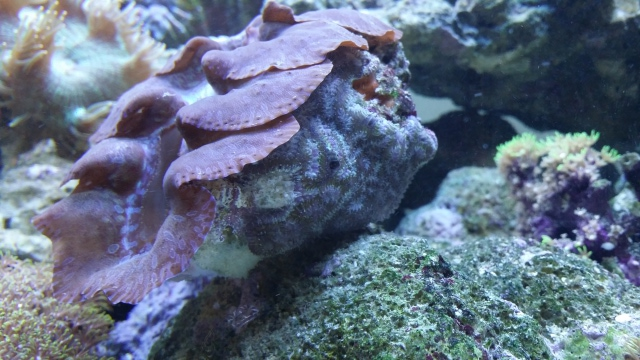 Strange growth on my clam
Question
clam growth
Hi David,
I have been in t
Strange growth on my clam
Question
clam growth
Hi David,
I have been in t
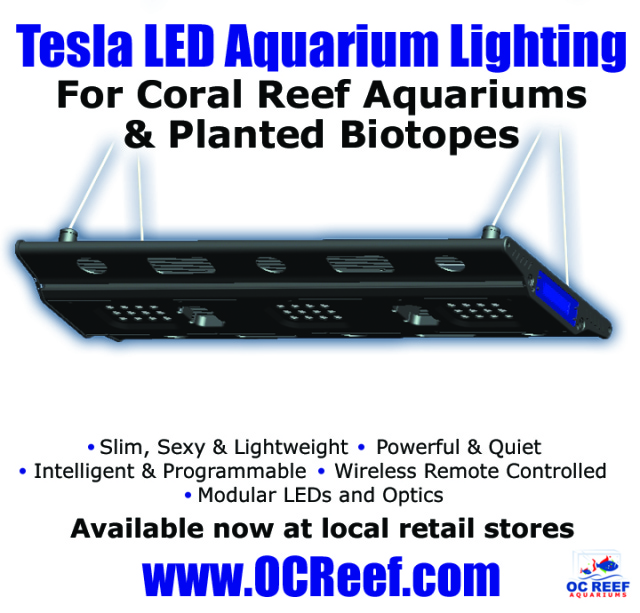 what type of light should i use
QuestionI have a problem i need help with. I have
what type of light should i use
QuestionI have a problem i need help with. I have
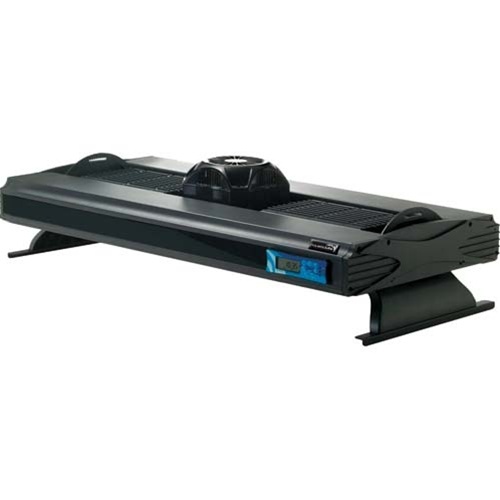 Aquarium Lighting
QuestionHello,
I am setting up a 65g saltwater aquarium
Aquarium Lighting
QuestionHello,
I am setting up a 65g saltwater aquarium
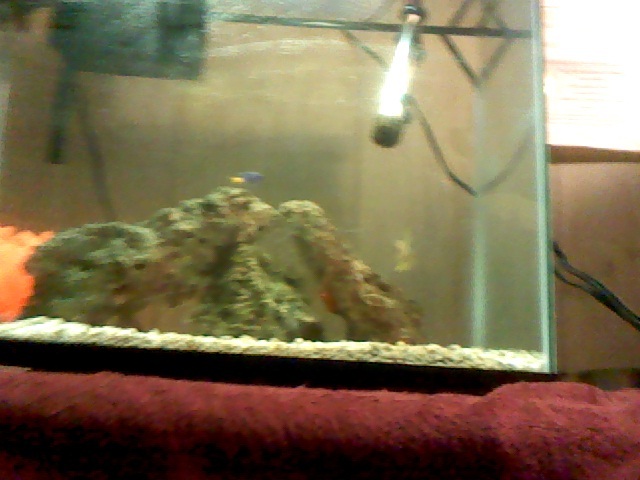 aqurium light
Question
my tank
hello, I have a 14 gallon aquarium tha
aqurium light
Question
my tank
hello, I have a 14 gallon aquarium tha
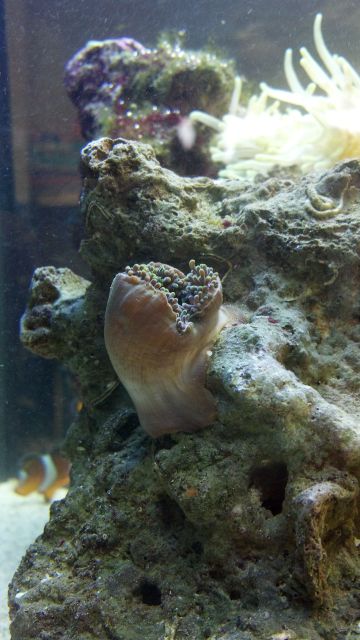 anenome Problems
Question
anemone
I have had my tank for quite so
anenome Problems
Question
anemone
I have had my tank for quite so